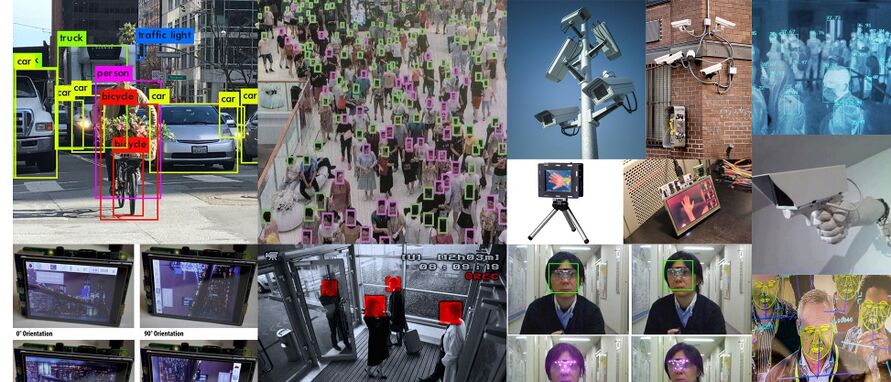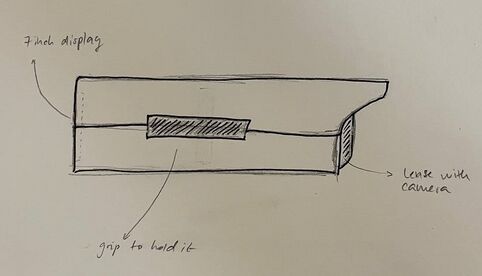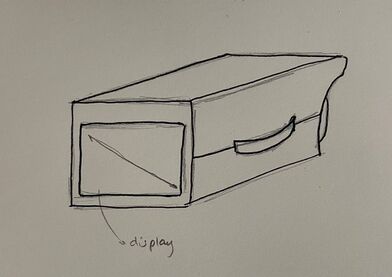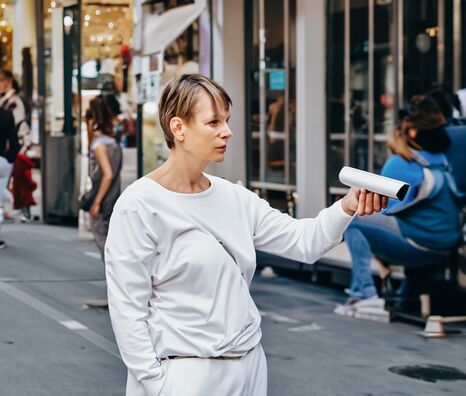User:Berna Bereit Project That May or May Not Be Made: Difference between revisions
Berna Bereit (talk | contribs) No edit summary |
Berna Bereit (talk | contribs) No edit summary |
||
| Line 2: | Line 2: | ||
Explore other May or May Not Be Made Projects here: [[RapidPrototypeandProject that May]] | Explore other May or May Not Be Made Projects here: [[RapidPrototypeandProject that May]] | ||
Here you can find the content of the project itself: https://pad.xpub.nl/p/bernadette-geiger-re-secure-content | |||
== re-secure == | == re-secure == | ||
Revision as of 12:26, 28 May 2024
These proposals originally were developed in this pad, but not all of them made it to the wiki page: https://pad.xpub.nl/p/bernadette-geiger-t3-methods. The accompanied research and developing process done for this project can be read here: https://pad.xpub.nl/p/bernadette-geiger-re-observer
Explore other May or May Not Be Made Projects here: RapidPrototypeandProject that May
Here you can find the content of the project itself: https://pad.xpub.nl/p/bernadette-geiger-re-secure-content
re-secure
What is it?
"re-secure" is an installation that unfolds the insight of a security camera, making transparent what these semi-hidden cameras see and questioning it's purpose for security.
In the form of an aesthetically seamless surveillance camera, users assume the role of observers by engaging with a fictional security device. By peering through the camera's eyepiece, they view a 7-inch LCD display that presents a short video. This video provides insights into various security cameras, elucidating their purposes, the entities that employ them, their visual capabilities, and the data they collect. In the subsequent segment, the narrative delves into the personal dimension of feeling (un)secure, offering a critical perspective on security systems. At the conclusion of the video, viewers are prompted to reflect on their own sense of security. Throughout the viewing experience, the visitors remain stationary, fully focused on the video while becoming performatively a surveillance camera themselves.
Why make it?
In the modern urban landscape, surveillance systems are often presented as an essential part of a comprehensive security infrastructure. However, these systems, which are supposed to protect us, consist of numerous small black boxes that record data opaquely. On the outside, they appear to be subtle objects, inconspicuously integrated into the cityscape and easy to overlook. But inside they harbour a complex system that collects a wide range of data and, depending on the legal situation, can be connected to personal information to trace people.
The "re-secure" is an post-optimal object that draws attention to the topics of surveillance.
Imagine yourself in the role of the observer. You become aware of the numerous surveillance points and their potential range. Your attention is focussed on the subtle presence of these objects, which you might hardly have noticed before. You start to ask yourself questions: What data is being collected? Who has access to this information? How is it being used?
This reflection leads to a critical examination of the omnipresence of surveillance and the balance between security and privacy. The opaque black boxes in the cityscape are more than just technical devices; they symbolise a field of tension in which the need for security must be weighed against the right to privacy.
Timetable
15.05 - 20.05: fully formulate concept + references/sources
21.05 - 28.05: think of technical aspects - How could it be built? What compontents do I need? Sketches for help
28.05: List for ordering electronics
29.05 - 05.06: Close primary research
05.06 - 19.06: production of product
20.06: testing
21.06 - 26.06: final changes + set up for SI24 lauch
27.06: SI24 launch built up
Previous practice
In a previous project I developed pixel glasses that protect people from being recognized by CCTV (http://bernadettegeiger.com/working_with_against_technology.html)
Relation to a wider context
#antisurveillance #cctv #piracyforprivacy #whatismydataworth
Rapid prototype template
Additional Reference
- FaceValue by Simon C. Niquille (https://www.wired.com/2013/10/thwart-facebooks-creepy-auto-tagging-with-these-bizarre-t-shirts/ )
- reflectacles (https://www.reflectacles.com/ )
- https://qz.com/10-fashions-to-help-you-confuse-facial-recognition-syst-1851112545
- https://www.businessinsider.nl/clothes-accessories-that-outsmart-facial-recognition-tech-2019-10?international=true&r=US
- https://projectkovr.com/
- https://cybernews.com/privacy/anti-surveillance-fashion/
- https://yr.media/tech/guide-to-anti-surveillance-fashion/
Sources
[1] Mareis, Claudia: Unsichtbares Design und post-optimale Objekte. Interfacedesign und Entmaterialisierungsdiskurse seit circa 1960. In: Bartz, Christina;Kaerlein, Timo;Miggelbrink, Monique;Neubert, Christoph: Gehäuse: Mediale Einkapselungen. Paderborn: Fink 2019, S. 93-114. DOI: 10.25969/mediarep/3961.




